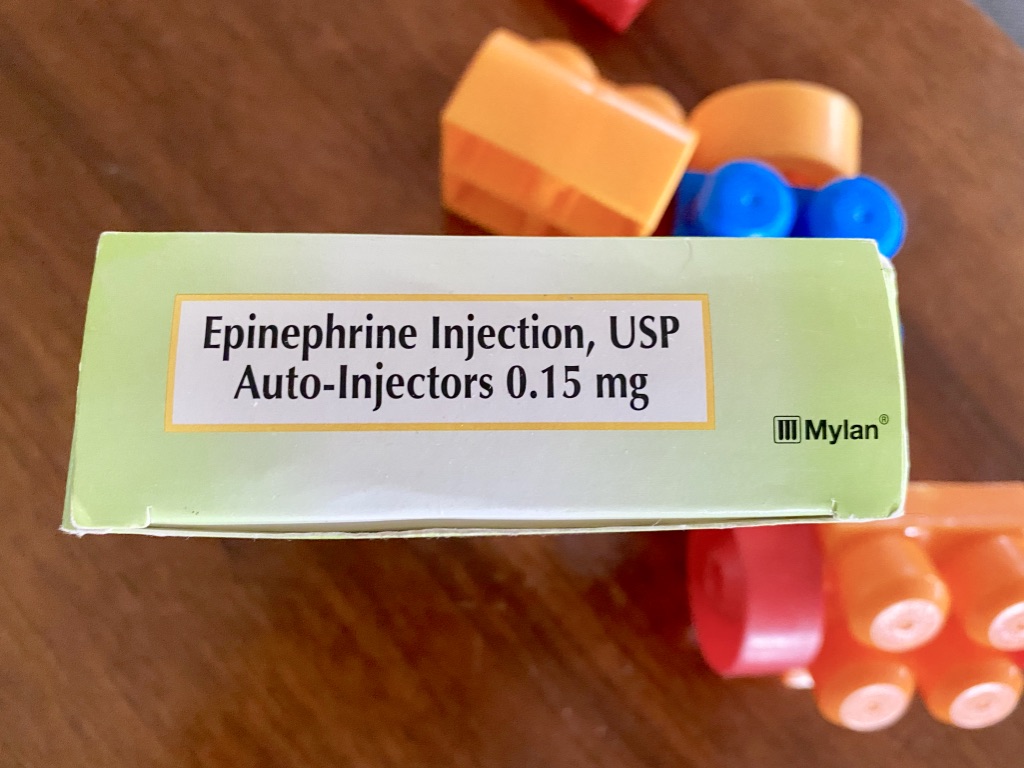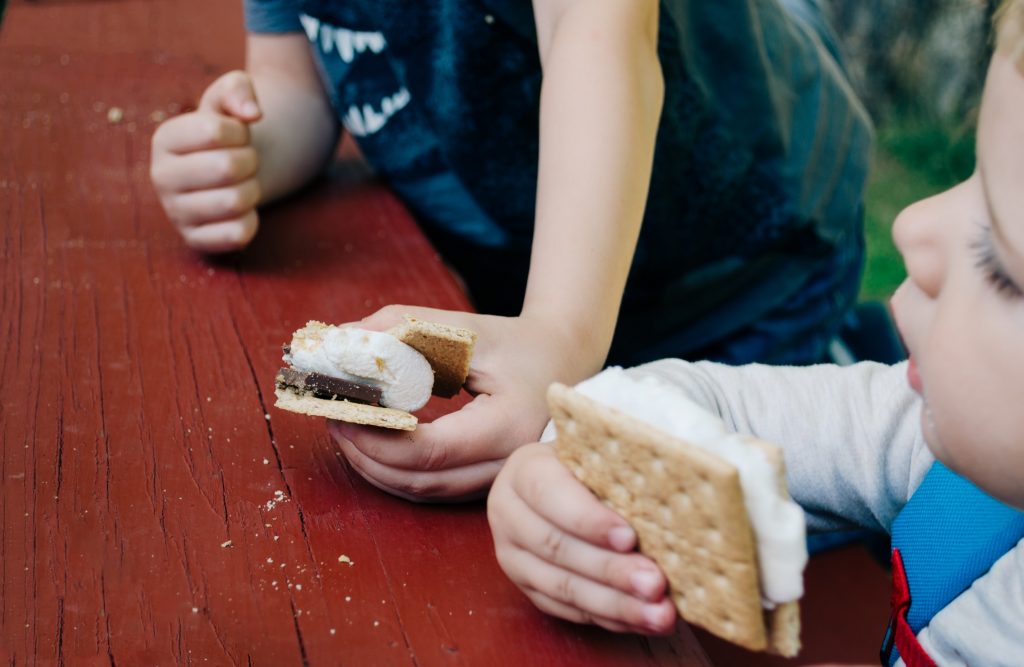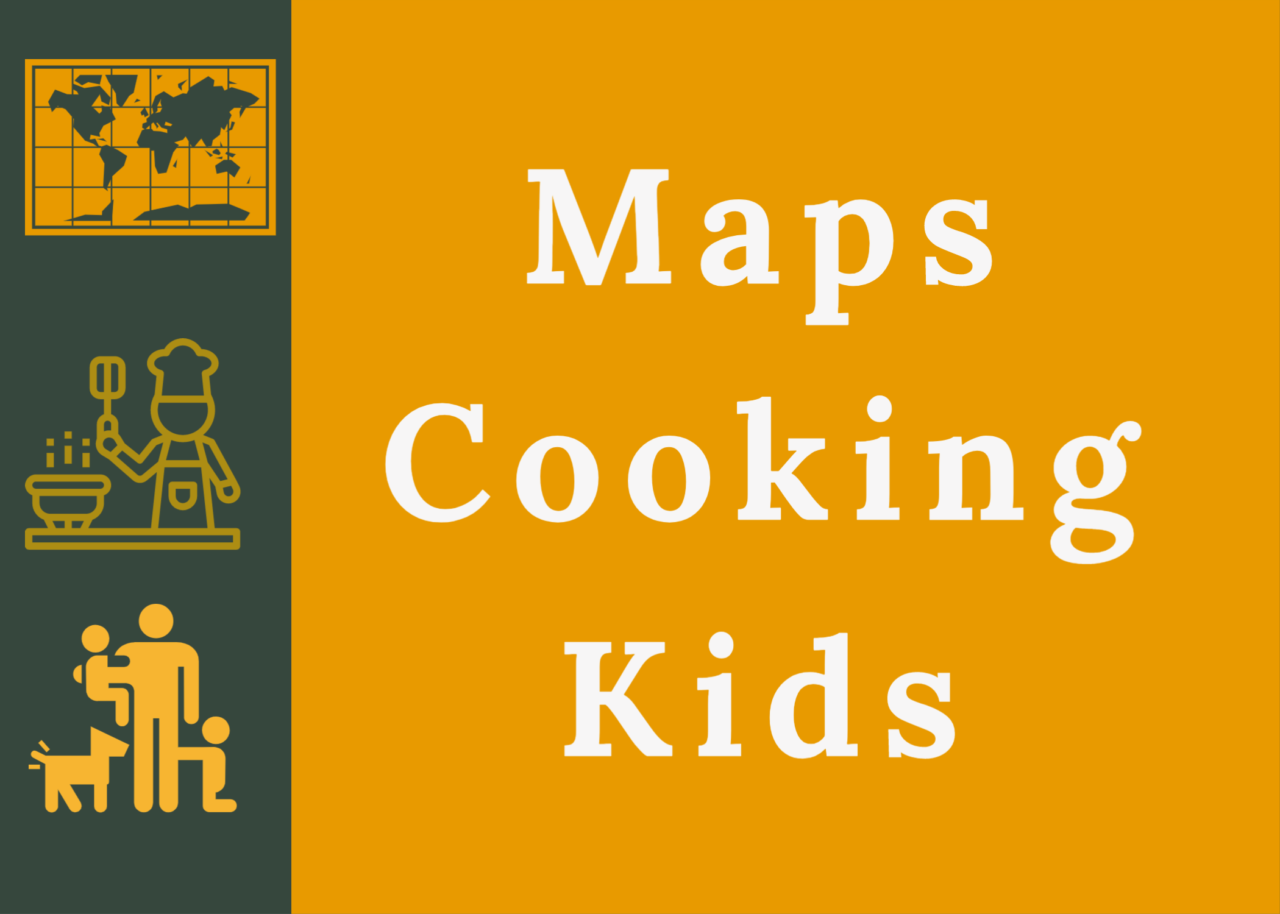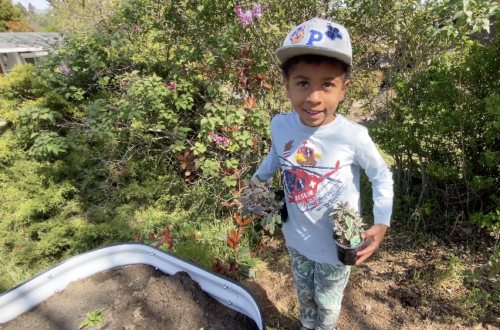
Nut Allergies

What does having a child with nut allergies look like? When my daughter was 18 months old, she was a picky eater. Fruits, vegetables and milk were her favorites, but she disliked proteins such as chicken, fish, or eggs. Although I knew that peanut butter was a definite no-no until at least age 3, my friend suggested I give it to my daughter for protein. She said that her children had eaten it since they were 1 year old and had no problems. So, the next day, frustrated with my daughter’s pickiness, I offered her a baby spoon with peanut butter on it. She grabbed it and took a taste. Within seconds, her lips swelled, her face and hands developed hives, and I knew she was having a reaction to peanut butter. What did I do?
We rushed her to Urgent Care where she was treated with Benadryl and diagnosed with a nut allergy. Fortunately, she made it through the frightening ordeal unscathed; however, we were warned that the next time she ingested nuts, it could be life threatening. What’s more, we needed to carry an epi-pen as well as Benadryl with us at all times. I made a very big mistake by giving my daughter peanut butter before her immune system and body could process it properly. Unfortunately, my daughter has to live with those consequences for the rest of her life.
Allergy test

Following her diagnosis from the Urgent Care physician, I made an appointment with an Allergist for my daughter. The Allergist performed the skin “prick” test to determine what other allergies my daughter may have as I was told they are typically prone to have more than one. We learned that she is allergic to mold, mildew, dogs, cats, tree nuts, and quite a few seasonal things like grasses and weeds. However, the nut allergy is the most damaging to her system and causes the most symptoms requiring more immediate care. From that day on, I’ve researched nut allergies and how to keep my child safe at home, at school, and other locations where she may come in contact with nuts.
Food allergy caution in public

As a parent of a child with nut allergies, I’ve learned that the more people we tell about it, the better my daughter’s chances are at staying safe. My first response was to tell all of our family members about her allergies and to require that they never allow her to ingest a nut of any form. This includes all baked goods, snacks, processed packaged foods, etc. I demonstrated how to read food packaging labels and where to look for ingredients on them. As shown below, most labels read, “May contain nuts” or “Processed in a factory with nuts”. In addition, I gave family members who were in close contact with our daughter an epi-pen and Benadryl to keep with them in case of an emergency.
Nut free zone

Once my daughter began preschool at the age of 3, I made sure her teachers and the staff were aware of her allergy. They required an epi-pen and Benadryl in the classroom and a staff member was properly trained to administer medication if needed. What’s more, they made every parent aware that there was a nut allergy in the classroom; therefore, it was designated a “Nut Free Zone”. My daughter knew never to touch or eat anyone else’s food during snack or lunch time. And, we were assured of her safety.
Contains tree nuts, peanuts and soy
Unfortunately, as much as we tried to keep her safe, we encountered another episode of an allergic reaction when our new neighbor welcomed us with cookies. When we moved into a new home, as a kind gesture, our neighbor came over to introduce herself with a plate of homemade cookies. At 5 years old, my daughter immediately reached for the cookies. We stopped her first and asked our new neighbor if the cookies contain nuts. “No,” she said, “there aren’t any nuts.” So, we allowed her to take one. After one bite, she started to cough. We gave her some water thinking she just had a tickle in her throat. But the coughing continued and worsened. Her lips began to swell as did her eyes. Then the hives and itching progressed from her face to her chest, arms, and hands. “Oh no,” I yelled, “Call 911!” My husband gave her Benadryl quickly, which soothed her coughing and lessened the hives. She was breathing normally, but the swelling remained the same. She looked like she’d been in a boxing match! Within minutes, the paramedics rushed in and took her to the ER where she received epinephrine. Again, she survived an allergic reaction to nuts but this time it was far worse – just as the doctor predicted the first time. Our neighbor sorrowfully admitted that she forgot her recipe included peanut butter baking chips and was profoundly sorry. Of course, we didn’t blame her. It was an honest mistake. But, it proved to me that I had to be more vigilant – simply asking if it had nuts wasn’t enough anymore. I had to try it myself first.
After two very scary allergic reactions, we became obsessed about protecting her from another episode. We made sure to try all foods that were at parties or other events before allowing her to eat. We spoke to our daughter as much as we could about her allergies and how to stay safe, reinforcing that she only eat what we provide for her unless she asks us first. Since she’s been in grade school, we’ve included an epi-pen and Benadryl as part of her safety plan, with physician signed documentation, which includes all school functions like field trips. As she’s grown up, she’s been taught how to effectively deliver an epi-pen shot to herself. Her friends and their families are well aware of her allergy and always ask if they question a certain food’s ingredients while she’s in their homes. We take extra precaution when traveling or eating out at a restaurant with her, as well. We make sure staff is informed of her allergy and keep medications on our person at all times. Unfortunately, it only takes one bite of food containing nuts for symptoms to begin, and we never know how severe the next reaction will be for her.

Now that my daughter is a teenager, she can manage her allergies much better. However, as her parent, my worry never ceases. We continue her annual allergist appointments, update her school medical safety plans every year, speak with teachers and school staff, and communicate with her openly and often about staying safe. Unfortunately, her nut allergy won’t go away. It will be part of her life for the rest of her life. However, it can be managed safely and effectively by constantly communicating to her and others about her allergy. It’s important no matter how much time goes by that we do not let our guards down and stay focused on keeping her healthy. In doing so, my hope is that she will become an adult who takes her allergy seriously, as well. Do you have a child with nut allergies? How do you keep your child safe from nuts? Connect with us on Instagram @MapsCookingKids or on Twitter @MapsCookingKids. Until next time, Agape, be kind, and happy parenting.





